- Books Name
- CBSE Class 7 Social Science Book
- Publication
- Param Publication
- Course
- CBSE Class 7
- Subject
- Social Science
* INTRODUCTION
Grassland can be defined as a region where grasses from the dominant type of plant life. Grasslands make up almost a quarter of the total land surface. As climate pays an important role in the formation of grasslands, it is generally used as a basis to divide the world’s grasslands into two broad categories: those that occur in the temperate region and those that occur in the tropical regions.
* The Prairies
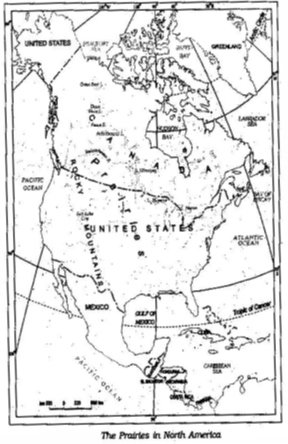
(i) Word Prairie originated from Latin word priata which means meadow.
(ii) The temperate grasslands of North America are known as the Prairies.
(iii) It is a region of flat, gently sloping or hilly land. For the most part, prairies are treeless but, near the low lying plains, flanking river valleys, woodlands can be found.
(iv) Tall grass, upto two metres high, dominates, the landscape.
(v) It is actually a “sea of grass’.
* Location
(i) The prairies are bound by the Rocky Mountains in the West and the Great Lakes in the East.
(ii) Prairies cover parts of United States of America and parts of Canada.
(iii) In the USA, the area is drained by the tributaries of Mississippi and the Canadian prairies are drained by the tributaries of Saskatchewan Rivers.
* Climate
(i) The climate is of continental type.
(ii) The summers are warm with temperatures of around 20°C, while in winter – 20°C has been recorded in Winnipeg, Canada.
(iii) In winters a thick blanket of snow covers this region.
(iv) The annual rainfall is moderate and is ideal for the growth of grass.
(v) Due to the absence of the north-south barrier, a local wind “Chinook” blows here. Chinook is hot wind that blows in winter and therefore raises the temperature in a short time. This increase in temperature results in the melting of snow, making pasture land available for grazing of animals.
* Flora
(i) Prairies are practically tree-less.
(ii) Trees such as willows, alders and poplars grow, where water is available.
(iii) Places that receive rainfall of over 50 cm, are suitable for farming as the soil is fertile.
(iv) The major crop of this area is maize, other crops including potatoes, soyabean, cotton and alfa-alfa are also grown.
(v) Areas where rainfall is very little or unreliable, grasses are short and sparse.
* Fauna
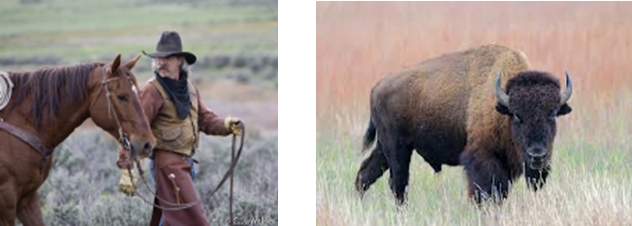
(i) These areas are suitable for cattle rearing.
(ii) Large cattle farms called ranches are looked after by sturdy men called cowboys.
(iii) Bison or the American buffalo is the most important animal of this region which nearly got extinct due to its indiscriminate hunting and is now a protected species.
(iv) The other animals found in this region are rabbits, coyotes, gophers and Prairie dog.
* People
(i) The people of the prairies are very hardworking. They have successfully harnessed technology to utilise their rich natural resources.
(ii) Scientific methods of cultivation and use of tractors, harvesters and combines has made North America a surplus food producer. The Prairies are also known as the “Granaries of the world”, due to the huge surplus of wheat production.
(iii) Dairy farming is another major industry. The dairy belt extends from the Great Lakes to the Atlantic Coast in the east. Dairy farming and extensive agriculture both promote setting up of food processing industries.
(iv) Large mineral deposits particularly coal and iron and a good network of roads, railways and canals in this region have made it the most industrialised region in the world.
(v) Combine: A machine which can sow, plough and work as thresher all by itself.
* The Velds
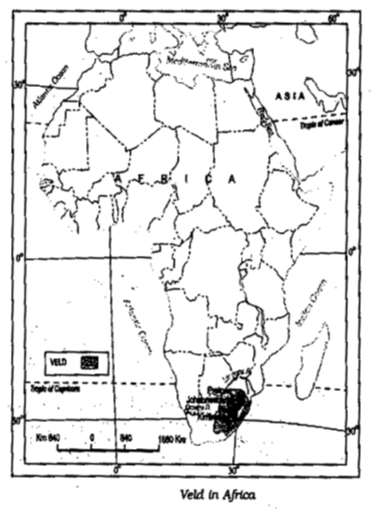
(i) The temperate grasslands of South Africa are called the velds.
(ii) Velds are rolling plateaus with varying heights ranging from 600 m to 1100 m.
(iii) Veld name was given by Dutch settlers.
* Location
(i) It is bound by the Drakensburg Mountains on the east.
(ii) To its west lies the Kalahari desert.
(iii) On the northeastern part, “high velds” are located that attain a height of more than 1600 m, in some places.
(iv) The tributaries of rivers Orange and Limpopo drain the region.
* Climate
(i) The velds have a mild climate due to the influence of the Indian Ocean.
(ii) Winters are cold and dry.
(iii) Temperatures vary between 5°C and 10°C and July is the coldest month.
(iv) Summers are short and warm.
(v) Johannesburg records about 20°C temperature in the summer.
(vi) The velds receive rainfall mainly in the summer months from November to February mainly because of the warm ocean currents that wash the shores of the velds.
(vii) If the rainfall is scanty in the winter from June till August, drought may occur.
* Flora
(i) The vegetation cover in sparse and grasses dominate the landscape.
(ii) Red grass grows in bush velds.
(iii) In the high velds acacia and maroola are seen to be growing.
* Fauna
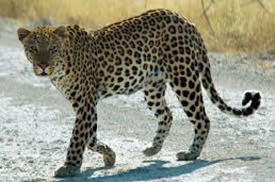
The animals of the velds are primarily lions, leopards, cheetah and kudu.
* People
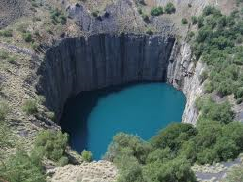
(i) Known for cattle rearing and mining.
(ii) The soils are not very fertile in the velds due to the presence of discontinuous grasses exposing barren surface. The main crops are maize, wheat, barley, oats and potato. Cash crops like tobacco, sugarcane and cotton are also grown.
(iii) Sheep rearing is the most important occupation of the people. Sheep is reared mainly for wool and has given rise to the wool industry in the velds. Merino sheep is a popular species and their wool is very warm.
(iv) Dairy farming is the next important occupation. Cattle are reared in the warmer and wetter regions and the dairy products like butter, cheese are produced for both domestic supply and also for export.
(v) The velds have rich reserve of minerals:-
(a) Iron and Steel industry has developed where coal and iron are present.
(b) Gold and diamond mining are major occupations of people of this region.
(c) johannesburg is know for being the gold capital of the world.
(d) Kimberley is famous for its diamond mines.
(e) Mining of diamond and gold in South Africa led to the establishment of trade ties with Britain and gradually South Africa became a British Colony.
(f) This mineral rich area has a well-developed network of transport

 Param Publication
Param Publication
